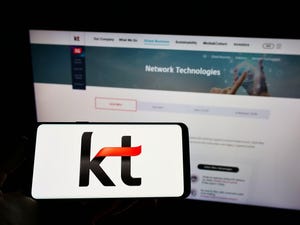Docsis 3.0 Specs Head to the Freezer
CableLabs has locked down the specs to ensure a stable platform and to prevent potential 'feature creep'

DENVER -- Cable Next-Gen Broadband Strategies -- If you're thinking about adding any new features to an already massive Docsis 3.0 specification, you had better think again. Unless CableLabs and its members agree that they're "must-haves," any new ideas will stand little chance of becoming an official part of the next-gen broadband platform anytime soon.
That's because the specs have been "frozen" for all intents and purposes, according to Matt Schmitt, director of Docsis specifications at CableLabs, and the midday keynoter Tuesday at the second annual Cable Next-Gen Broadband Strategies Light Reading Live event.
Schmitt said CableLabs and its members are now focused on stabilizing the platform, ensuring that Docsis 3.0 does not become a moving target for vendors and operators. Locking down the specs also aims to prevent "feature creep," an issue that emerged during the development of previous versions of Docsis.
"We really wanted to get rid of that problem," he said.
Today, some key Docsis 3.0 features include upstream and downstream channel bonding, enhanced IP multicast, IPv6, and the Advanced Encryption System (AES), a feature that some businesses and government customers are now insisting upon. So far, CableLabs has certified 19 standalone modems for Docsis 3.0, and seven voice modems. A total of six cable modem termination systems (CMTSs) have achieved some level of Docsis 3.0 qualification.
Moving forward, CableLabs and its MSO members will heavily scrutinize any new feature proposals and determine whether they're something "you need to have, or something you want to have," Schmitt said. If it's in the latter category, it will have a difficult time making it into the official specs.
But Schmitt allows for some some wiggle room, noting that CableLabs will consider proposals "on a case-by-case basis.".
For example, the Docsis 3.0 specs currently recommend that modems and CMTSs support a 1 GHz downstream range. Today, an 870 MHz range is mandatory. CableLabs is considering changing the 1 GHz option to a spec requirement, which may be a smart move now that most new cable modems and set-tops are being designed to tune to those higher levels, and MSOs such as Cox Communications Inc. outfit systems with more downstream capacity. (See Cox Makes 1 GHz Moves .)
And what about Docsis 4.0, or a new spec that incorporates fiber-to-the-premises capabilities and some different flavors of PON? "It's a point of discussion now," Schmitt said. "We want to be aware of what the technology options are."
In the meantime, Docsis 3.0 "has pretty substantial legs to it," he added, noting that there's no cap on how many channels can be bonded together. "We think there's a lot of life there."
The Docsis 3.0 specs presently call for equipment to bond a minimum of four upstream and downstream channels. Texas Instruments Inc. (NYSE: TXN) and Broadcom Corp. (Nasdaq: BRCM) have already developed cable modem silicon that can bond as many as eight channels. (See Broadcom: Sub-$50 Docsis 3.0 Modem in Sight and TI Flexes Docsis 3.0 Muscle .)
And SMC Networks Inc. has already developed a cable modem/gateway targeted for business services that houses the new TI chipset. (See SMC Shows 320-Meg Cable Modem.)
No CMTS 'sunset' yet
CableLabs still has not made a final determination when to phase out a tiered CMTS qualification plan that was created to help speed adoption and deployment of Docsis 3.0 and to give vendors more time to incorporate some of the more complicated elements of the specifications. (See CableLabs Accelerates Docsis 3.0 Testing .)
Schmitt said those discussions are still going on and will ultimately be decided upon by the Docsis certification board.
Generally speaking, Bronze-level qualification covers downstream channel bonding and IPv6; Silver adds in upstream channel bonding; and Full covers all of the spec's features. If CableLabs enacts a "sunset" on Bronze and Silver, that would mean CMTS vendors could only shoot for Full Docsis 3.0 qualification.
So far, only one CMTS vendor, Casa Systems Inc. , has obtained the Silver and Full designations. (See CableLabs Cheers Casa Chassis.)
The industry's primary CMTS vendors -- Arris Group Inc. (Nasdaq: ARRS), Cisco Systems Inc. (Nasdaq: CSCO), and Motorola Inc. (NYSE: MOT) -– have all achieved Bronze qualification.
In a follow-up panel session, execs from those three CMTS players said their respective companies fully intend to support upstream channel bonding and the other components of Docsis 3.0, but fell short of saying precisely when they might be ready for official testing at CableLabs.
"We're still evaluating where we're at," said Mike Cookish, senior director of product management at Motorola's Access Networks Solutions division.
"The most important thing is to have the features that are critical to our customers out as soon as possible," added Mike Emmendorfer, senior director of solution architecture and strategy, office of the chief strategy officer, at Arris.
Dave Beebe, a systems engineer for Cisco's cable division, and other panelists agreed that they'll be able to support shared upstream speeds of 100 Mbit/s or greater as they introduce denser upstream linecards designed to snap into legacy CMTS chassis.
— Jeff Baumgartner, Site Editor, Cable Digital News
About the Author(s)
You May Also Like












